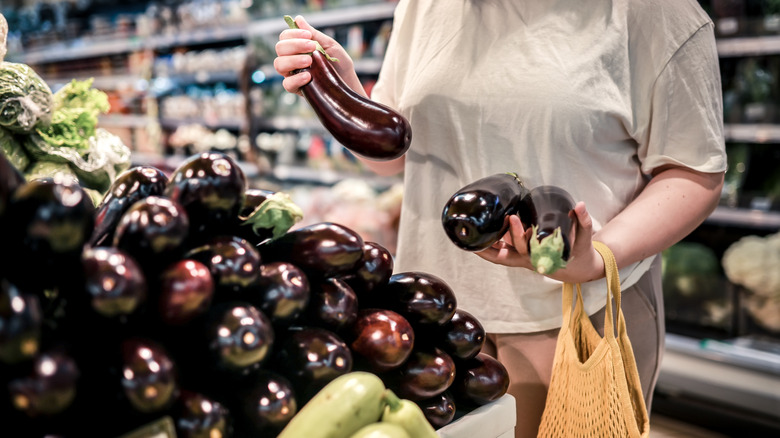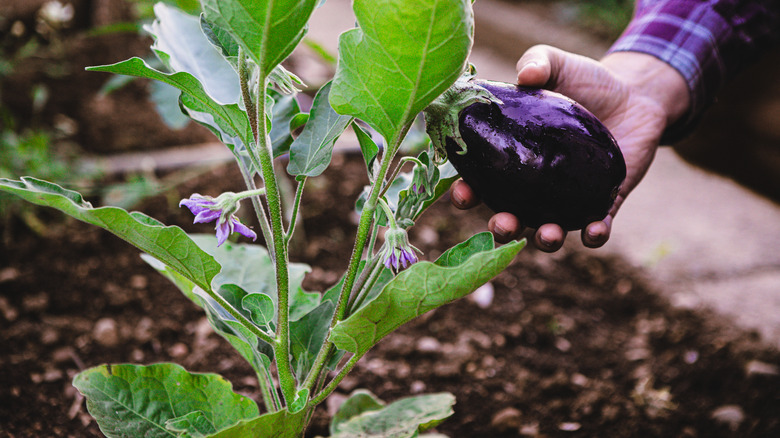How To Select A Perfect Eggplant At The Grocery Store
Eggplant is one of those fruits (yes, technically eggplant is a fruit) that folks either really enjoy or avoid at all costs. But the key to a successful eggplant dish isn't all that complicated. It begins at the market when you take your pick: As a general rule of thumb, make sure the eggplant is firm to the touch, the stem and cap are bright green instead of brown or dried out, and the skin of the eggplant is smooth and shiny.
There are more tricks to choosing the perfect eggplant depending on the variety: Globe, also known as American, eggplants should feel heavy for their size and have smooth, glossy skin without wrinkles or blemishes. When gently pressed, the flesh should be firm and spring back slightly; if your finger leaves an indentation, the eggplant is overripe, and would yield an undesirable, mushy texture when cooked. Indian eggplants, also known as baby eggplants, are smaller, round, and typically purple or striped. They should be firm with unblemished skin and bright, fresh-looking stems. Chinese eggplants are longer and thinner, with a lighter purple hue. Look for ones that are straight and firm without soft spots. With these tips and tricks up your sleeve, you can whip up delicious dishes from perfectly roasted eggplants to a grilled take on eggplant parmesan and Asian-inspired eggplant stir-fries.
The myth of male and female eggplants
You may have heard the age-old advice that you should opt for male eggplants as they have fewer seeds and are less bitter than their female counterparts. But let's cut to the chase: There is no variation in sexes in the realm of eggplants and fruits in general. Eggplants, like all fruits, develop from fertilized flowers and have no designated sex, but the myth about male and female eggplants persists despite being debunked by the evidence from botanical science.
The origins of the myths are likely due to noticeable indentation patterns at the base of the eggplants due to natural variation, which sometimes have varying amounts of seeds or slight taste differences. The actual variation in seed quantity and flavor comes from factors such as pollination success, growing conditions, and the stage of maturity at harvest. Understanding the true science behind eggplant development helps dispel this myth and allows cooks and gardeners to focus on the characteristics that genuinely matter in selecting the best eggplants for their culinary needs.

